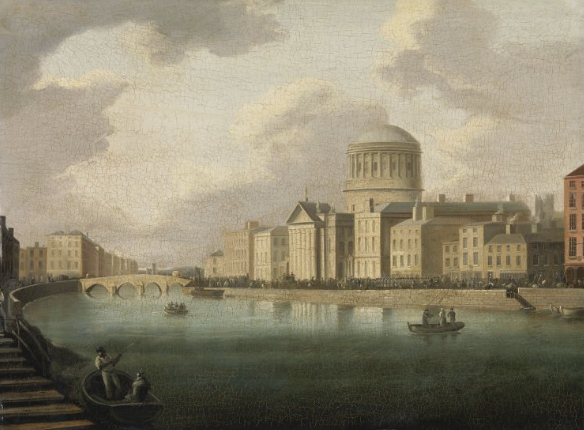
Saunders’s News-Letter of 31 December 1802 reported that
“[t]here is… a talk of casting a very broad bridge over the river in front of the Four Courts, which shall form an open area equal to the extent of the building; there will afford an opportunity to our architects of showing their genius by making various designs.”
A bridge in front of the new Four Courts certainly made sense from an aesthetic point of view. However, on 16 May 1808, a letter was published in the same publication saying that
“a bridge… exactly opposite the Four Courts… would be a national impropriety… it would be a nuisance to the Four Courts….a street as proposed, to run up from this bridge direct to High Street… would run from the lowest part of Dublin, the river level, straight to the highest part of it, in the middle of High Street… a coach drawn by six horses could not ascend it… a coach to be drawn up such a street, would require a windlass in the middle of High Street, to draw it up there…”
The bridge did not go ahead, but until the late 20th century, as shown in this illustration by Flora Mitchell, there was a gap on the quays immediately opposite the Four Courts, offering to the imaginative gazer a sense of what might have been!






